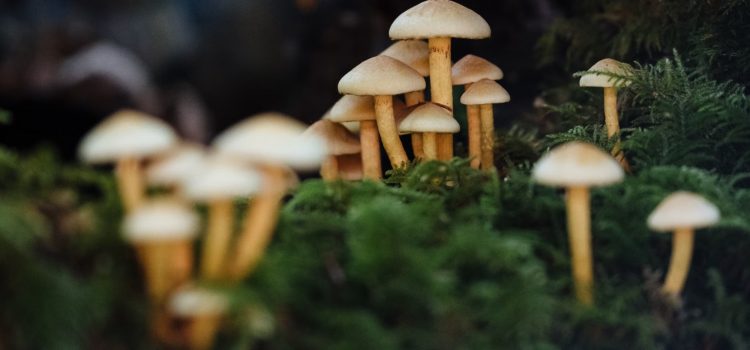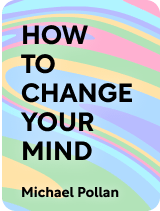

This article is an excerpt from the Shortform book guide to "How to Change Your Mind" by Michael Pollan. Shortform has the world's best summaries and analyses of books you should be reading.
Like this article? Sign up for a free trial here.
What does the science of psychedelics entail? What are the psychological and physiological effects of psychedelics?
In How to Change Your Mind, Michael Pollan delves into recent research that has uncovered how psychedelics work. This includes the subjective psychological experiences they trigger and their physiological effects on the brain.
Continue reading to learn more about what science has found out about psychedelics.
The Scientific Research on Psychedelics
The science of psychedelics proves that they have the potential to treat mental health problems that can be otherwise treatment-resistant. Pollan tells us that two recent studies have shown an 80% success rate in the alleviation of anxiety and depression among cancer patients. Similar results have been achieved with studies using psychedelics to treat addiction. These kinds of success rates, he says, are unprecedented with any other form of treatment. But how do they work?
Unlike other pharmaceutical treatments, Pollan explains that with psychedelics it may not necessarily be the chemical reaction in the brain that’s therapeutic but the experience resulting from it. And that experience isn’t centered on the “visions” the subject has, but on the revelations they have from those visions. In this section, we’ll look at how psychedelic experiences are described, as well as what researchers have learned about what’s going on in subjects’ brains to produce these experiences.
(Shortform note: A 2021 study by researchers at Johns Hopkins examined the question of whether psychedelics could be useful from a solely biochemical standpoint, or whether the subjective experience of the trip is necessary. The study concludes the latter, stating that the neurobiological mechanisms are “likely necessary but not sufficient” to confer lasting therapeutic benefits.)
How Is This Research Conducted?
In reviewing the large volume of psychedelic research from the 1950s through today, Pollan notes that there have been a number of conflicting conclusions—some studies have had significantly higher success rates than others. He suggests that one factor contributing to disparities in results is the difference in “set and setting,” a crucial factor in psychedelic experimentation. “Set” refers to the mindset of the person at the time they take the psychedelic, and “setting” to the space and context within which the drug is taken. Leary stressed the vital importance of these factors for the outcome of the experience, and they remain central to the approach to psychedelics in research today.
Pollan describes how these studies are conducted in clinical settings. He says participants are put in a comfortable room at the research center with a guide who is trained to direct the subject’s experience. The rooms are generally created to be pleasant, tranquil spaces, with soothing music playing. Guides may give the subject a description beforehand of what they’re likely to experience, and the subjects are always asked to relax and allow the experience to unfold. Having a guide there to remind the subject of this mitigates the risk of them becoming too fearful and going into a negative trip.
According to Pollan, subjects may be primed to expect to feel like they may be dying, dissolving, or losing themselves, and reassured that they shouldn’t be afraid because they will come back to reality. They should just let it happen, in order to get the fullest experience. They may also be told to expect mystical experiences and to fully embrace them.
Pollan points out that some have challenged the scientific nature of these methods, pointing out that this priming creates an expectancy effect—in other words, the researchers telling subjects what to expect necessarily influences what they’ll experience. Pollan explains, however, that most researchers dismiss this concern, because (a) it’s unavoidable—they have to do this for the safety of the subjects, to ensure that they don’t have “bad trips,” and (b) this research is specifically about how psychedelics might be used to bring about healing and/or these mystical experiences, so specifically trying to induce that is within the objectives of the study.
The Indescribability of the Psychedelic State
One of the biggest challenges with understanding how psychedelics work is that the experiences themselves are notoriously difficult to describe—participants almost always express a lack of ability to put the experiences into words. When they do describe them, the experiences tend to sound like hallucinatory or dream-like events, or even like spiritual clichés—for example, the description that “everything is love” or the sense of “oneness with the universe.”
Other common descriptions of psychedelic experience include:
- The feeling that one communicated with God, or became a god oneself
- The dissolving of one’s sense of self and/or the merging of self with others/everything
- The realization that death is an illusion and that consciousness survives it
- The sense that one is being born or giving birth (in one of his trips, Pollan experienced the feeling that he was giving birth to himself)
- A deep sense of connectedness with, and reverence for, nature
- Encounters with loved ones, alive or dead
These trips are usually accompanied by vivid sensory experiences of the outer and/or inner world. Psychedelic-assisted therapy often takes place with a mask covering the subject’s eyes, so the subject experiences all of their “visions” in their mind. But those who have psychedelic experiences in a non-clinical setting, without their eyes covered, tend to experience the outer world, especially nature, as particularly colorful, beautiful, and awe-inspiring.
Pollan presents two possible explanations for what happens when one undergoes a psychedelic experience:
- The chemicals act on the brain to trigger activity that produces hallucinatory experiences. Or,
- The chemicals open up our perception to real things that we don’t perceive in our normal waking consciousness.
But, upon reflecting on these two possible explanations, he asks: Does the distinction really matter? When talking about experiences like “oneness with the universe,” how can you distinguish between whether it was a “real” experience or a drug-induced hallucination? Pollan ultimately concludes that it’s an irrelevant question, because whatever chemical reaction is happening, the insights, revelations, and psychological effects are undoubtedly as real as anything else—and maybe more so.
What Do Psychedelics Do to the Brain?
While research into the neurological effects of psychedelics is young, and researchers haven’t yet pieced it all together, some theorize that the substances may affect the way our brains filter or interpret information. Pollan says this research challenges conventional notions that the experiences are “hallucinations.”
Researchers at Imperial College in London in 2009 looked at brain scans of people undergoing psychedelic experiences with psilocybin. They expected to see increased brain activity, and that was the case for some regions, including those associated with emotions and memories—particularly otherwise subconscious ones. Considering the experiences people describe, this was not surprising. But what was surprising was the reduced activity in the “default mode network”—a network of brain regions responsible for our sense of self as a distinct individual.
This network is also responsible for filtering information from the outside world. Pollan says this filter allows us to operate more efficiently by allowing only the most important pieces of information in at any given time. So, he explains, because this default mode network is suppressed during a psychedelic experience, that means the brain is letting in sensory input that’s normally restricted. We know, for example, that people see colors differently (often perceiving them as brighter) and hear music in a more intense and nuanced way under the influence of psychedelics.
So, Pollan says the brain research suggests that the way we perceive things in the altered state could be the unfiltered reality, while our brains usually act as filters—weeding out all the “unnecessary” information—to simplify our everyday experience. In other words, he says one could argue that our everyday consciousness is essentially a hallucination in itself—it’s composed only of the information the brain lets in and is processed against our prior experiences. And Pollan says it’s likely that this one particular mode of consciousness evolved to be our default one because it best allows us to efficiently complete tasks necessary for survival. But he says it’s only one of multiple possible modes of perception.
Pollan Goes on Trips of His Own
In the course of research for this book, Pollan decided to undertake his own personal experimentation with psychedelics. As an American man in his 60s, he’d long been aware of psychedelics but had never tried them. After interviewing dozens of people, and hearing so many stories of transformation, healing, and realization, Pollan was driven to see if he could also derive some benefit from these substances. He knew this would be the only way to truly understand the subject. So he confronted his fears and used his connections from this book’s research to arrange some trips for himself.
Pollan’s experiences mirror those described in the research. For example:
- Trip #1—Psilocybin mushroom tea: For his first experiment, Pollan made a relatively mild brew of mushroom tea. This trip was unguided at his home. He describes a heart-opening feeling of being one with nature.
- Trip #2—LSD: Pollan undertook this trip with a professional guide, who gave him a relatively mild, but significant, dose of LSD. During this experience, he was able to process some deep emotional issues around his loved ones. Afterward, he felt like he’d had several years of therapy in just a few hours.
- Trip #3—Psilocybin mushrooms: In this experiment, Pollan ate a large psilocybin mushroom under the guidance of an experienced healer. He had a calm and serene experience that revealed to him that “there is life after ego death.” In this state, he describes being free from fear, desire, expectation, and judgment. It gave him a sense of reconciliation with death—both his own and that of his loved ones.
- Trip #4—“The Toad”: For his fourth psychedelic experience, Pollan braved one of the most powerful psychoactive agents—a substance called 5-MeO-DMT, which is obtained from the secretion of a toad. Under the guidance of an expert in the substance, he experienced a period of extreme terror and dissolution of self, followed by equally intense bliss and the feeling of being reborn into the world with immense gratitude for his existence.
Reflecting on his varied psychedelic experiences, one of Pollan’s major revelations was that our consciousness exists beyond our sense of self. He realized there is nothing to fear from the loss of one’s ego or sense of separate self, as it was not a frightening experience (apart from the initial fear during the toad experience). He realized that this explains why psychedelic therapy can be so beneficial for patients facing terminal illnesses.
(Shortform note: Psychedelic therapy shows great promise for addressing the fear and depression experienced by terminally ill individuals. By facilitating psychological well-being, promoting meaning-making, and inducing transformative experiences, psychedelics offer a unique avenue for dealing with existential crises. A 2016 study found that psilocybin-assisted therapy led to significant reductions in depression, anxiety, and existential distress in cancer patients, which was sustained at a six-month follow-up. In 2023, however, the only place psilocybin can be legally used for palliative care is in the state of Oregon, which will be implementing training programs for psychedelic facilitators.)

———End of Preview———
Like what you just read? Read the rest of the world's best book summary and analysis of Michael Pollan's "How to Change Your Mind" at Shortform.
Here's what you'll find in our full How to Change Your Mind summary:
- The long and complex history of humans' relationship with psychedelics
- Psychedelics' potential use for mental health treatment today
- Why there are so many cultural and legal issues surrounding psychedelics






